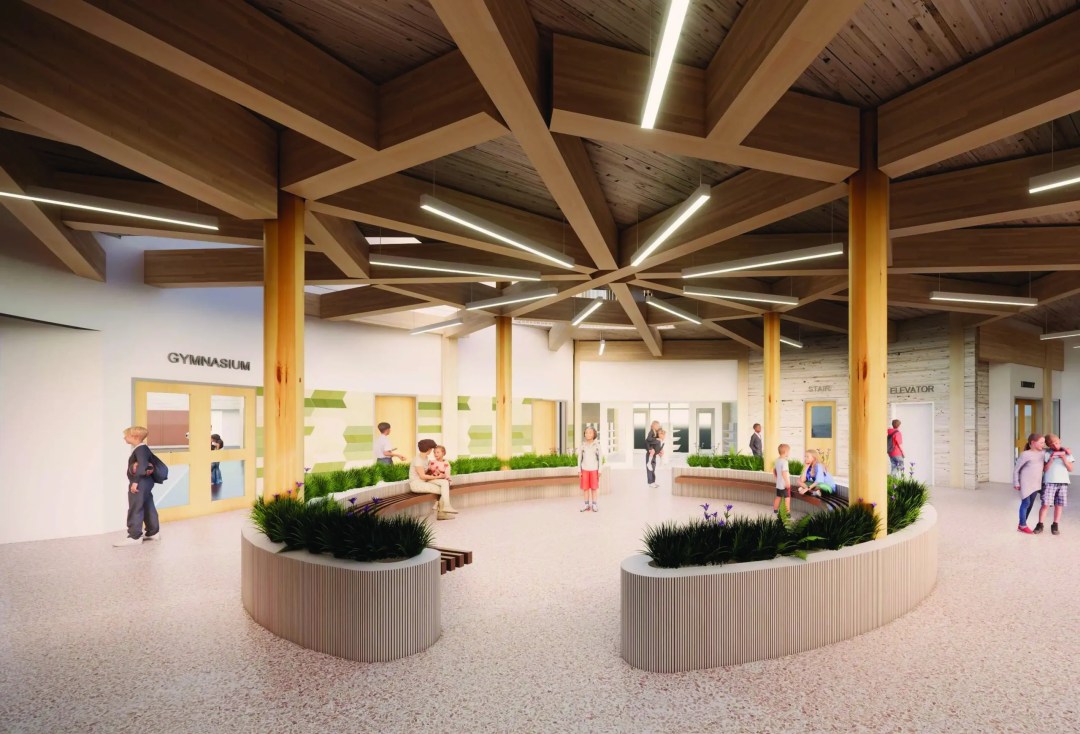ISL Engineer Spotlight: Reviving Saskatchewan’s Mass Timber Legacy

Saskatchewan’s Guy Farms grain elevator is among the few 270 timber elevators remaining from the original 6,000 that once dotted the prairie landscape
ISL’s structural engineers are constantly pushing boundaries and finding innovative solutions for complex projects. David Wing, M.Eng., P.Eng., one of our experienced structural engineers, recently led an extraordinary project that bridges Saskatchewan’s timber heritage with cutting-edge sustainable construction. Recently, David shared his experience about one of his recent projects called the Saskatoon City Centre school, a structure that’s literally built from the province’s agricultural past.
How did the idea of using reclaimed grain elevator timber come about?
David
When most people think of Saskatchewan, they don’t immediately think “mass timber hotspot,” but the province actually has a rich history with timber construction that many don’t realize. Back in the 1950s and 60s, during the first glulam fabrication revolution, Saskatchewan was at the forefront. The original potash mines used massive, long-span glulam arches for storage buildings that were some of the biggest structures in the world by volume. Small towns across the province built glulam arch hockey and curling rinks as an efficient way to span long distances.
But what really caught my attention was the heritage of timber grain elevators. At the peak in the 1960s, almost 6,000 timber grain elevators were dotting the Saskatchewan landscape. These were hand-built using cribbed construction, or what we now call nail-laminated timber (NLT). Unfortunately, most of these elevators have been burnt or demolished and replaced with larger concrete and steel silos. Today, fewer than 270 timber elevators remain.
The idea for reuse came about from a Saskatchewan farmer, Alvin Herman, who was about to demolish his own grain elevator, but he decided it deserved to be saved. He founded a wood reclamation company, ABMT Wood Solutions, and ISL was engaged to find an engineering solution for reuse of this wood. This initiative coincided with our design of a new school in Saskatoons core neighborhood.
Tell us about the scope of the City Centre school project and what makes it so innovative.
David
With support from Natural Resources Canada and the GCWood program, Saskatoon’s new City Centre school is doing something truly groundbreaking and repurposing NLT panels reclaimed from local grain elevators as structural floor, roof, and wall panels. We’re essentially taking buildings that have stood for decades on the prairies and transforming them into a modern educational facility.
The numbers are impressive: three existing elevators will provide 353,000 board feet of reclaimed spruce, pine, Douglas fir, and western red cedar panels. But here’s the challenge – each panel requires individual verification due to their unique layups. No two grain elevators were built the same way, so we’re essentially reverse-engineering dozens of different construction approaches.
The building will be a demonstration of mass timber construction, also utilizing a glulam and cross-laminated timber superstructure. It will showcase what is possible for low-carbon construction on a large scale.

The school’s interior, with an exposed mass timber structure for both the functional as well as aesthetically appealing modern learning space
What were the biggest challenges you faced with this project?
David
The project required two alternative solutions for code approval, which were both challenging and exciting. First, we needed alternate compliance for a three-storey combustible assembly occupancy, which is unique in Saskatchewan. Second, we had to develop a method for confirming the reclaimed wood properties instead of using traditional visually graded lumber.
We partnered with the University of Saskatchewan to conduct mechanical testing and wood species identification. It’s forensic engineering meets sustainable construction.
At ISL, we’re not just providing structural engineering for the building, but we’re also handling specialty engineering and shop drawing production for the reclaimed timber supplier. It’s a comprehensive approach that enables every piece of heritage timber to be properly integrated into a modern, safe structure.
How does this project align with current trends in sustainable construction?
David
This project perfectly demonstrates the circular economy in action. Instead of sending these grain elevators to landfills, we’re giving them a second life as a school that will serve the community for decades to come. It reduces waste, preserves heritage, and creates something beautiful and functional.
Mass timber construction is already gaining momentum for its sustainability and construction speed benefits. We’re not just building with renewable materials; we’re actively rescuing materials that would otherwise be lost.
The project also showcases Saskatchewan’s potential as a mass timber destination. We have the forestry resources, we have the engineering expertise, and as this project proves, we have the innovative spirit to push boundaries.

Careful deconstruction reveals the hand-built nail-laminated timber construction that will soon find new life in Saskatoon’s innovative school project.
What’s your vision for the future of mass timber in Saskatchewan?
David
Construction is currently underway with project completion expected in 2027, and I’m excited to see this vision become reality. This project proves that Saskatchewan can be a leader in innovative timber construction, just as we were in the 1960s.
I hope this project inspires other projects to consider mass timber and to find reclaimed wood sources that can be repurposed. We have amazing project partners on this build – Kindrachuk Agrey Architecture, Quorex Construction, Western Archrib, and Timberwood Innovations. Together we’re proving that heritage and innovation can work hand in hand.
We’re proud to be part of a project that honours Saskatchewan’s past while building its future. It’s not just about engineering solutions; it’s about creating structures that tell a story and serve communities for generations to come.
The City Centre school project represents the innovative thinking and engineering excellence that ISL brings to every project. From heritage preservation to cutting-edge sustainable construction, our teams find creative solutions that serve our clients and communities.
Your Next Read
ISL Expands in the Columbia Valley
ISL Expands in the Columbia ValleyISL’s longstanding work in the Columbia Valley now has a permanent home. After several years of successful project...
Protected: Lessons from the Dutch: Designing Streets for People
Password Protected
To view this protected post, enter the password below:
Guildford Way: Coquitlam’s New Complete Street
Guildford Way: Coquitlam’s New Complete StreetCarl, Elly and Gabriel at the protected corner of Guildford Way and Pacific StreetConstruction is now...





